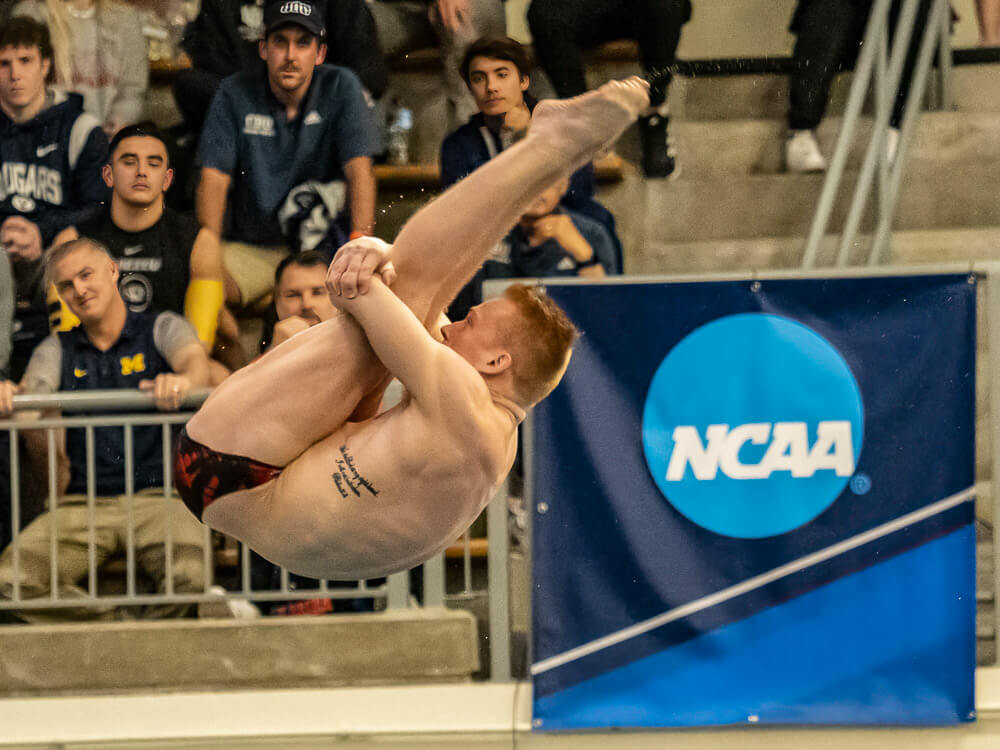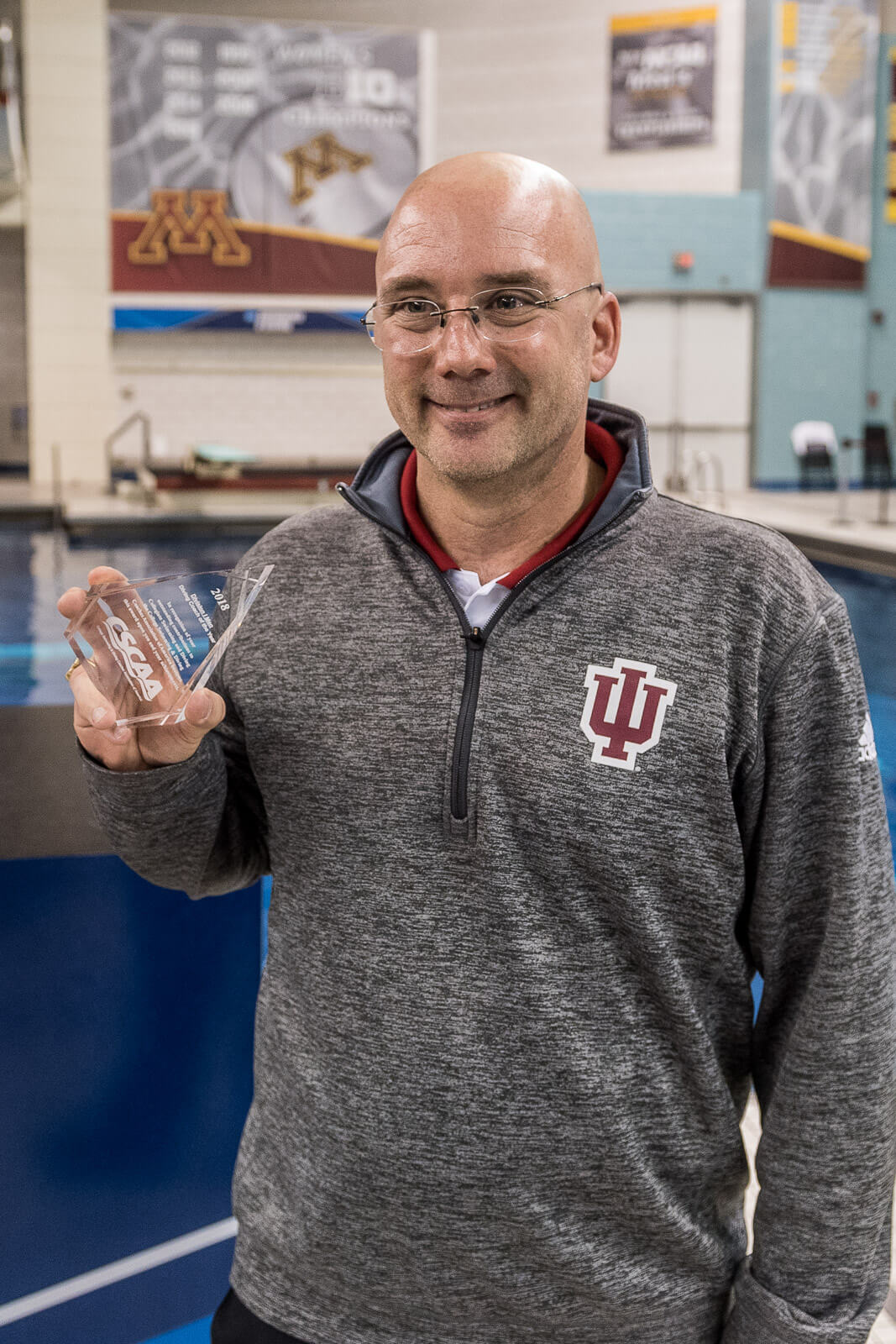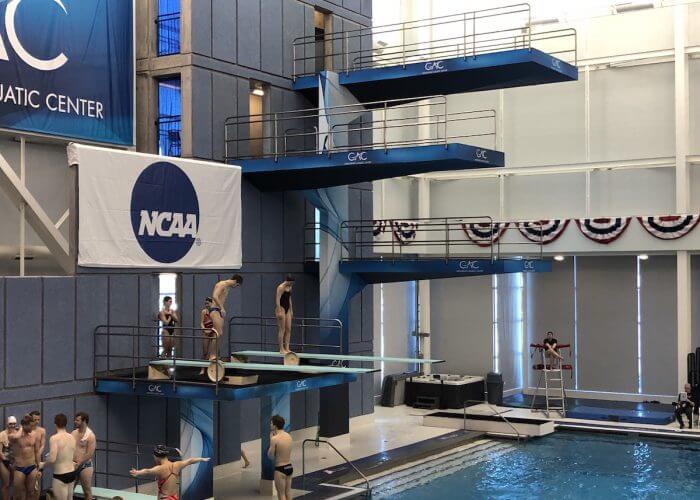‘It’s a Scary Time’: Changing Landscape of College Sports Has Diving Programs on Edge

‘It’s a Scary Time’: Changing Landscape of College Sports Has Diving Programs on Edge
By Michael Stott
As a high school swim coach whose teams won more than one state championship thanks to divers, I’ve always appreciated the skill and athleticism those athletes bring to the boards – and the pool. Since May 23, 2024, when the NCAA reached a settlement in the case brought by Grant House and TCU/Oregon basketball player Sedona Price, questions have abounded regarding name, image and likeness payments to college sport participants. The biggest recurring query has been: “what’s next?”
To Review:
The resulting action from the House vs. NCAA settlement allows D-I college athletes to receive pay directly from their universities and agrees to back-pay damages to former Division I athletes who were unable to profit on their NIL rights. Also proposed is a revenue sharing model between schools and athletes. The settlement received preliminary approval October 6 by U.S. District Court Judge Claudia Wilken. The final approval hearing is set for April 7, 2025.
Under the $2.78 billion settlement (back pay to former college athletes), the NCAA would be responsible for roughly $1.2 billion from reserves. Power 4 conferences would be responsible for about 24 percent in withheld future revenues. Every collegiate athlete who competed between 2016 until the time of settlement will have the opportunity to opt into the revenue share.
FACT: College football and basketball generate close to 90 percent of all revenues from college sports. Those monies play a major role in the existence of what we know as Olympic sports.
In the collegiate athletics world, forward-looking discussions have centered around team roster sizes, recruiting implications and financial resources needed for Olympic sports survival on college campuses. “Swimming and diving are in a unique spot,” says CSCAA executive director and former college coach Samantha Barany. “That’s because they are two distinctive sports that come together in the collegiate space and both need to be considered independently and collectively.”
To that end Swimming World sought out the opinion of four-time Olympic diving head coach Drew Johansen who also directs the diving program at the Indiana University. Johansen is a former member of the USA Diving National Team and has coached club, collegiate, national and international squads. He has coached both the U.S. Diving World Championship and U.S. Diving Junior World Teams. Johansen founded the U.S. Elite Diving Academy in 2001, developing it into one of the largest and most successful junior and senior programs in the nation. Since 2007, he has been the head coach and owner of The American School for Diving, which is a USA Diving Center of Excellence. In short, he knows diving at all levels.
The View from Here:

Photo Courtesy: Peter H. Bick
“It’s a scary time right now,” says Johansen. “The NCAA is in a transformational period across all sports including football and basketball. There is not a whole lot of clarity right now. We have an idea of where the settlement will go, but until it goes there we won’t know. I do believe the settlement is needed. Once it is done, Congress will hopefully calm things down for the business of the NCAA. It’s vulnerable to antitrust suits right now. There is still a lot that needs to happen given the future projections people are making. A settlement will give us a sense of how to operate, especially regarding roster limits and revenue sharing.”
“I do see a future for Olympic sports as long as Congress supports the NCAA operating in the manner it has since inception. My worry is for diving. We are not a standalone sport in NCAA eyes. We fall under the umbrella of swimming. Given roster limit projections, I hope we can carve out a space for diving that’s legislated.
“Right now, if we end up with 22 men in the SEC as projected, there isn’t a whole lot of space for diving when you are talking about a maximum 18-man NCAA championship roster. The SEC allows 22 athletes on the conference championship roster. Before the NCAA added the platform event, divers only counted one-third because they could only be in two events compared to seven potential events for a swimmer. The SEC changed the rule for their conference championship inclusion, so divers now count one roster spot, making diving even less impactful in terms of an overall team score.
“That’s not been a major problem for teams like Cal, Arizona State and Michigan, who have been able to win championships without putting resources into diving. If you have the swimming depth that a top swim coach can attract — and with unlimited scholarship dollars — there is no need to do anything for diving. That’s a concern.
“We just need to get our heads together and figure out the best way to move forward and give diving a space for the team sport we are. The swim coaches will make those decisions; diving coaches don’t get a vote. Every swim coach is in the same position with a worry about preserving our sport. Putting diving at the forefront when they are not sure about their roster size places them in a difficult spot to even think about or advocate for diving.
“There are some proposals out there. The SEC, ACC and Big Ten all have different championship meet formats.
- SEC championship meet format is 22 athletes, divers count 1:1
- ACC championship meet format scores 18 swimmers, guarantees three divers. Bring more than 3 divers substitute 1:1 with swimmers
- Big Ten follows the national format: 18 man roster size, divers count as ½
“I think some sort of hybrid could be our future. But it’s tricky because you go to the NCAA and propose a change and they say, ‘that’s interesting. If we see it at the conference level we’ll do it.’ Then we see our conferences doing it three different ways with no unity – so there is no change at the conference level. The three conferences need to talk about creating the best possible format and commit to getting it to the national stage. That might settle this entire situation that has diving in jeopardy. And that’s where the CSCAA and the swim coaches have to advocate for a place for diving.
Growing the Sport
“Ray Looze and I are hoping the Big 10 will endorse roster size of 30 men and 30 women. If you are counting divers as one-half in the championship meet format then it makes sense to retain four or six divers on the team. That’s because you need bench spots, too.
“Diving coaches have been lobbying hard for a team event in the swimming and diving championships. The Big Ten has been running an exhibition event on the first day between the two opening relays and it has been well received. It takes about 18 minutes to run, doesn’t require more athletes and adds nothing to the budget.
“It works this way. There are three divers from each team. Each does two dives. The team must cover all six categories doing two dives each from 1, 3 and 10 meters. Last year, the Big 12 scored it in their championship meet with the point value being equivalent to a relay. That way, a diver’s value begins to match that of a swimmer. Adopting such a plan allows somebody with a really strong swim program (like Indiana) to say, ‘we still need to support diving because we are not going to give relay points away.’
“It’s been discussed at the SEC and Big Ten but no one has acted on it yet. Conferences are waiting for the dust to settle before doing so. The benefit in accepting something similar would solve a lot of our problems and unify the swim coaches who are really steering the future of our sport. To have a space for diving in the current team structure is really exciting – in some cases more exciting than the Olympic Games. The energy and power of team is really amazing and I want to keep that alive if we can.
Impact on Youth Sports

Photo Courtesy: Cathleen Pruden
“Youth sports in America is a $1 billion dollar industry. Parents first get kids involved in sports and games to have fun. If a child has some aptitude and is in an area to get coaching, there may be an opportunity to get to college – not necessarily to get a scholarship. Maybe diving ability helps a child get accepted or go to a D-II or D-III school. Any sport is a great way to enter college, acquire a friend group and/or get a mentor who helps them through the hard times. Now, if a scholarship happens, that can be another level up.
“Today’s NCAA changes are going to affect the youth sports industry. I imagine youth football is going to explode in America – not just scholarships but revenue sharing. Some kids are going to make more than their parents, just by being on the football team and in any of those Power 4 schools.
“BUT, in Olympic sports, we might see a down tick, just because opportunities will be fewer. If the settlement continues as proposed, there might be more scholarship dollars for some schools after roster limit adjustments. BUT not all schools are going to be able to do that. They’ve got to figure out how to handle a $21 million hit without any new revenue coming in.
“Once things get settled and budgets are established, I think we will have fewer elite programs in America, especially in diving. And some swimming programs may transition to more club-like/intramural programs with less funding from the athletic department. Over time you might even see that drift away. We are going to see a whole different funding model. As years go by, I hope aquatics don’t keep sliding away.
“The ADs are going to have to choose what sports they want to support. Schools are going to have to pick and choose sports at which they wish to excel and which they want to keep as a part of the college experience. Here at Indiana, my bet is they are going to want retain the storied program we have for swimming and diving.
Effect on U.S. Participation at the Olympic and International Levels
“That’s the concern right now. The NCAA is truly the backbone of our Olympic effort. (Ed. note: 82 percent of all American athletes in Paris came through the collegiate ranks). In China, they are government funded. Russia, Australia, Mexico, the Brits all have some sort of government funding that subsidizes their Olympic efforts. With the changes and shrinking we are going to see, fewer programs with the ability to produce Olympians or medalists.
“There will be fewer opportunities for people like 2020 3-meter Olympic medalist Krysta Palmer. She transitioned from trampoline and developed as a diver under a great coach at University of Nevada-Reno. Today that sort of thing happens and people develop in all sports.
“There are always athletes as juniors who are just under the elite level and develop to the Olympic level in college. In the future, if they are not picked up by the schools who have facilities and coaches to train them that will hamper our efforts on the Olympic stage for sure.
Message to Recruits
“I can’t speak for other coaches, but Indiana has had a diver at every Olympics since 1964. I am recruiting future Olympians and people I think can reach that Olympic stage. I am confident that the legacy of our program will not change and that we will keep producing Olympians. That’s what I am telling our recruits.
“Any program without a rich tradition and not in the Big Ten, which follows the national format and counts divers as one-half, will be in a program with fewer opportunities for diving. The Big Ten is the best conference for diving. Under the new system, with our tradition, revenue sharing and the settlement, diving at Indiana is not in jeopardy.
Saving the Sport – One Suggestion
“Create a hybrid of the SEC, ACC, Big Ten formats.
- Have a 22 person championship roster, guaranteeing four diver roster spots
- Add the team event and score as a relay
- Count divers 1:1
“That carves out an appropriate space for diving, with divers representing 18 percent of the events. I want every school to need diving in order to win a swimming and diving championship. Such an accepted plan would solidify the future of swimming and diving. If all three conferences would adopt it, it would move to the national level for adoption and we could focus on managing our rosters, budgets and growing the sport.
“I have a lot of friends who are worried, as they should be. I am ready to work in any way possible to help swimming and diving in the NCAA carve out a new future for everybody, one that will preserve the sport as it is in the NCAA. Doing so will position us to start growing the sport, swimming and diving as a team, again. In essence, it is the format of swimming and diving we have to evaluate in order to save a space for diving.
“Right now nothing’s for sure. Even the wealthiest schools may not look at swimming and diving as a sport at which they want to succeed. An AD may inspect the results of a conference championship, see the team among the bottom rungs and ask why he wants to make an investment in a program that is not good for them. That’s when the sport is going to get smaller.
“I haven’t heard about Big Ten schools dropping programs, just exploring different funding models, whether it be scholarships and/or operating budgets. Those are the annual expenses that have to make up the $21 million revenue that’s going to have to be shared with the athlete. All along the way you also have to raise money for NIL.
“I do see a future. We need to get the swim coaches on board. And need to preserve a space for diving with these new rules coming our way.”
Michael J. Stott is an ASCA Level 5 coach, golf and swimming writer. His critically acclaimed coming-of-age golf novel, “Too Much Loft,” is in its third printing, and is available from store.Bookbaby.com, Amazon, B&N and distributors worldwide.




Thank you so much for bringing this super important issue to light. I don’t think just Diving is at risk, but I’m grateful to you for highlighting this issue and the need for everyone to drill down and find a solution.